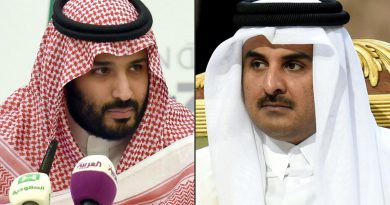Economics and nature square off in Dubai Airshow jet engine rift
Dubai (Reuters) – A debate over engine performance has exposed a dilemma facing aerospace firms at this week’s Dubai Airshow – the hottest part of the jet market is also the hottest part of the world.
Airlines want to save on fuel and have the lowest possible maintenance costs. But those forces are pulling against each other in sandy or dusty environments like the Gulf and India.
“Therein lies the problem for Rolls-Royce (RR.L) and Airbus (AIR.PA), because this is the region that is buying these airplanes and will buy them in big numbers if the engine issue is resolved,” Emirates Airline President Tim Clark told reporters this week.
The head of the world’s largest international carrier was speaking in the midst of negotiations to buy dozens of Airbus A350-1000 jets powered by Rolls-Royce’s XWB-97 engine, which have foundered for now over maintenance and pricing issues.
Emirates and Rolls papered over differences with a last-minute deal for a smaller quantity of the shorter A350-900, whose engine maintenance is seen as easier to predict.
The rare public dispute comes as engine makers want to be rewarded more for investments in new technology given the fuel savings they are offering to airlines on every mile of flight.
GE Aerospace (GE.N) set the tone under CEO Larry Culp. “We’ll still look to find opportunities to be paid fairly for the value that we create,” he told Reuters after half-yearly earnings in July.
Rolls-Royce CEO Tufan Erginbilgic, who took over in January this year, has indicated the company will no longer write unprofitable contracts for the sake of winning new deals, having already provisioned 1.4 billion pounds in loss-making contracts.
Critics say engine makers are paying for the hubris of past shows when they aggressively wooed airlines with conflicting promises of drastic fuel savings and trouble-free performance.
The airline industry, which operates on more slender margins than many of its suppliers, isn’t generally sympathetic.
“I really don’t want to have airplanes that are going to be breaking down all the time. I happen to be a service,” Emirates President Tim Clark told reporters this week.
Rolls-Royce said it was looking at ways of improving durability but denied its XWB-97 was “defective”.
At the heart of this week’s negotiation is a high-wire act between fuel efficiency and durability.
To achieve the fuel savings promised to airlines when the engines were sold, typically around 15-20%, they have to run hotter and push new materials to the limit.
But doing so imposes extra wear and tear.
Sand and dust can clog cooling holes and erode the leading edges of blades, reducing performance and forcing extra repairs.
That’s a problem especially for newer types of engine that tend to be sold using guaranteed service deals, delegates said.
Insurance-Type Deals
While the visible face of engine makers is technology, the way they generate much of their income resembles insurance.
Jet engines are typically sold at a loss but their designers make money on repairs and servicing spread over 20 years.
Rather than charge for repairs as they arise, engine makers increasingly strike long-term deals priced by the flight hour, agreeing to swallow the cost of planned and unexpected outages.
“It’s an insurance policy,” an engine industry source said.
To airlines, it means having predictable costs.
To engine makers it means generating cash as soon as the engine enters service rather than waiting for shop visits.
Where those complex calculations have become increasingly unstuck is in the sandy or dusty areas of the Gulf and India.
With every “stack” of life-limited parts costing millions of dollars, accurately predicting how many such organ transplants each engine will need over the course of its life is vital.
An errant or maintenance-prone engine can become a financial time-bomb, said one industry executive. Emirates’ Clark said Rolls wanted to increase hourly pricing to adjust to such higher costs. Rolls-Royce declined comment on pricing.
Rolls now faces a quandary whether to invest more in the XWB-97 to help Airbus better compete with the Boeing 777X after Emirates ordered 90 more of the competing GE-powered planes.
Refusing to do so would underscore Erginbilgic’s tough stand on profitability for investors, but risk leaving part of the wide-body market to Boeing (BA.N) and GE, and upsetting Airbus.
Some analysts think the cash would be better used elsewhere.
“Rolls-Royce has ceased to chase market share at any cost: it has learned not to, and it no longer needs to,” Agency Partners analyst Nick Cunningham said.



